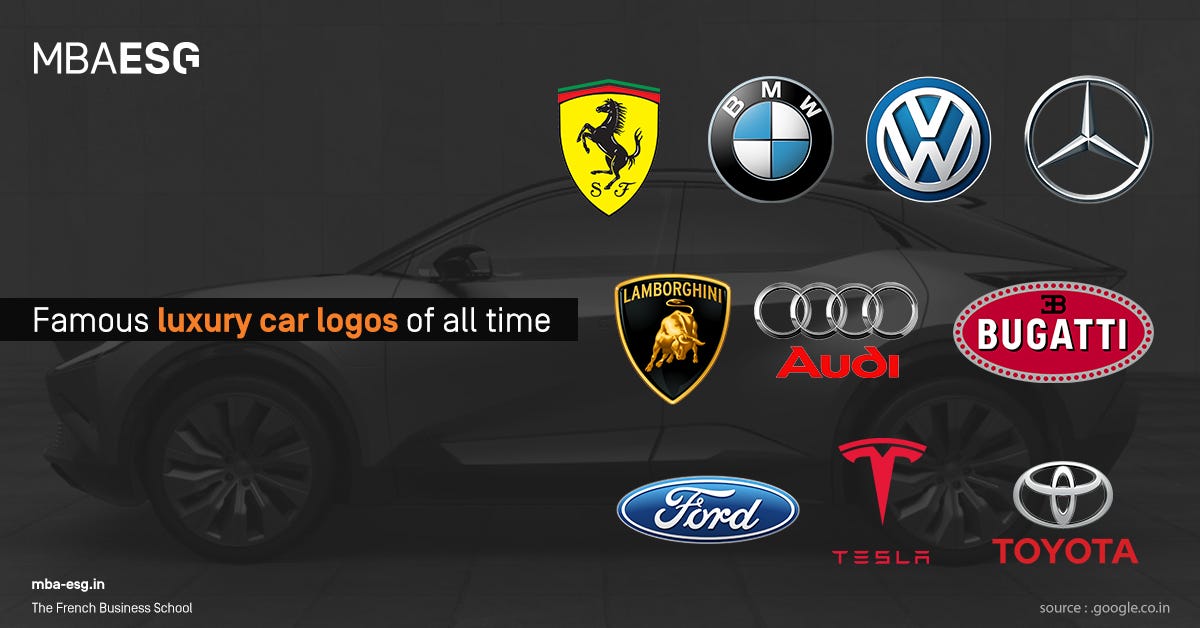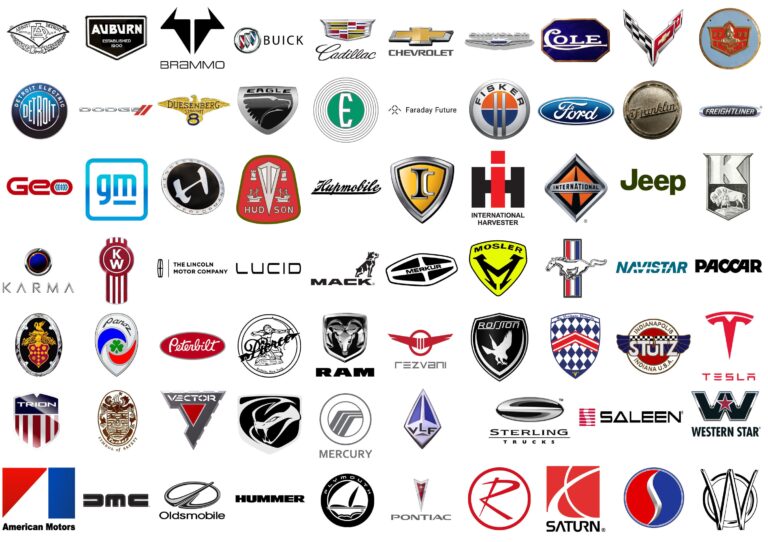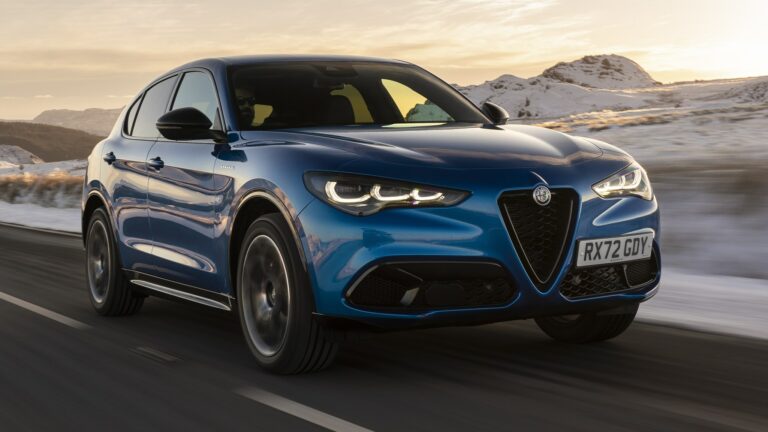Near Luxury Car Brands: Bridging the Gap Between Mainstream and Elite
Near Luxury Car Brands: Bridging the Gap Between Mainstream and Elite cars.truckstrend.com
In the expansive automotive landscape, a fascinating segment has carved out its niche, offering a compelling blend of aspiration and accessibility: the Near Luxury Car Brands. Positioned strategically between the everyday practicality of mainstream manufacturers and the opulent exclusivity of high-end luxury marques, these brands provide discerning consumers with an elevated driving experience without the stratospheric price tags or ownership costs often associated with top-tier luxury.
Near luxury cars are more than just vehicles; they represent a smart choice for those who desire superior craftsmanship, advanced technology, refined performance, and a touch of prestige, but who also prioritize value and practicality. This segment is characterized by brands that meticulously engineer vehicles to deliver a premium feel, enhanced features, and a sophisticated aesthetic, making a compelling case for themselves in an increasingly competitive market. Understanding this segment is crucial for anyone looking to upgrade their driving experience without overextending their budget, offering a gateway to automotive refinement that was once out of reach for many.
Near Luxury Car Brands: Bridging the Gap Between Mainstream and Elite
What Defines a Near Luxury Car?
The essence of a near luxury car lies in its ability to bridge the gap between mass-market affordability and true luxury indulgence. While they may not boast the same heritage or ultimate bespoke options as a Rolls-Royce or a top-tier Mercedes-Benz S-Class, near luxury vehicles consistently offer a significantly elevated experience compared to their mainstream counterparts. Several key characteristics define this compelling category:
- Elevated Design & Aesthetics: Near luxury cars exhibit more sophisticated and distinctive styling, both inside and out. Interiors feature higher-grade materials, such as soft-touch plastics, genuine wood or metal accents, and premium leatherette or real leather upholstery. The fit and finish are noticeably superior, with tighter panel gaps and a greater attention to detail.
- Enhanced Performance & Driving Dynamics: These vehicles typically come equipped with more powerful, refined engines, offering smoother acceleration and better fuel efficiency through advanced powertrains. Suspension systems are more sophisticated, providing a more composed and comfortable ride while also delivering more engaging handling. Noise, vibration, and harshness (NVH) levels are significantly reduced, contributing to a quieter cabin experience.
- Advanced Technology & Features: Cutting-edge technology is a hallmark of near luxury. This includes intuitive and feature-rich infotainment systems, comprehensive driver-assistance systems (ADAS like adaptive cruise control, lane-keeping assist, blind-spot monitoring), premium audio systems, heated/ventilated seats, heads-up displays, and advanced connectivity options that are often optional or unavailable on mainstream models.
- Superior Comfort & Refinement: Beyond just materials, the entire cabin experience is designed for comfort. Ergonomics are carefully considered, seats offer better support and adjustability, and climate control systems are more sophisticated. The overall ambiance feels more serene and inviting, reflecting a commitment to passenger well-being.
- Brand Perception: While not always carrying the century-old prestige of a Mercedes or BMW, near luxury brands have cultivated a reputation for quality, reliability, and modern sophistication. They often represent the premium arm of a well-established mainstream manufacturer, leveraging their parent company’s engineering prowess while building their own distinct identity.
- Strategic Pricing: Crucially, near luxury cars are priced to be accessible to a broader audience than full luxury vehicles. They offer a compelling value proposition, providing a substantial upgrade in features and quality for a premium that is manageable for many upwardly mobile consumers.

The Appeal of Near Luxury: Why Choose One?

The growing popularity of near luxury car brands is no accident. They cater to a specific consumer need, offering a multitude of benefits that make them an incredibly attractive option:
- Exceptional Value Proposition: Perhaps the most compelling reason to choose a near luxury car is the sheer value it offers. You gain access to many features, technologies, and material upgrades found in full luxury vehicles, often at a price point tens of thousands of dollars less. This allows buyers to enjoy a premium experience without paying the "luxury tax" associated with top-tier badges.
- Accessible Prestige and Sophistication: Owning a near luxury car provides a tangible step up in perceived status and refinement without the ostentatious display that some associate with ultra-luxury brands. It signifies a smart, discerning choice, reflecting an appreciation for quality and design.
- Balanced Performance and Practicality: These vehicles typically strike an excellent balance between spirited performance and everyday usability. They offer engaging driving dynamics for enthusiasts while maintaining the comfort and practicality needed for daily commutes, family duties, and long road trips. Many models also offer competitive fuel efficiency, especially with the increasing availability of hybrid and electrified powertrains.
- Lower Ownership Costs (Relatively): While generally more expensive to maintain than mainstream cars, near luxury vehicles often incur significantly lower ownership costs (insurance, parts, labor) compared to their full luxury counterparts. This is partly due to shared platforms and components with their parent mainstream brands, leading to better parts availability and more affordable service.
- Access to Cutting-Edge Technology: Near luxury brands are quick to integrate the latest automotive technologies. This means buyers can often enjoy advanced safety features, sophisticated infotainment systems, and innovative convenience features that might only be available on much more expensive models from full luxury brands, or take longer to trickle down to mainstream cars.
- Diverse Range of Options: The near luxury segment is incredibly diverse, offering everything from compact sedans and sporty coupes to versatile SUVs and practical wagons. This breadth ensures that consumers can find a vehicle that perfectly fits their lifestyle, family size, and driving preferences.

Key Players in the Near Luxury Segment
The near luxury segment is populated by several established and emerging brands, each bringing its unique philosophy and strengths to the table. Here are some of the most prominent players:
- Acura (Honda’s Luxury Division): Known for its focus on precision-crafted performance, advanced technology, and legendary Honda reliability. Acura vehicles often feature innovative all-wheel-drive systems (SH-AWD), sporty driving dynamics, and user-friendly interiors. Models like the TLX sedan and RDX SUV exemplify their blend of athleticism and refinement.
- Infiniti (Nissan’s Luxury Division): Infiniti emphasizes bold design, powerful engines (often V6 options), and a comfortable, driver-centric experience. They aim for a more passionate and emotional connection with their vehicles, evident in models like the Q50 sedan and QX60 SUV, which offer distinctive styling and strong performance.
- Lexus (Toyota’s Luxury Division – Entry/Mid-Tier Models): While Lexus as a whole is a full luxury brand, its entry-level and mid-tier offerings (such as the IS sedan, ES sedan, UX crossover, and NX SUV) firmly sit within the near luxury category. Lexus is renowned for unparalleled reliability, exceptionally quiet and refined cabins, luxurious comfort, and impeccable build quality. Their focus on customer service is also a major draw.
- Volvo: This Swedish brand has successfully redefined modern luxury with a strong emphasis on safety, minimalist Scandinavian design, environmental consciousness, and supremely comfortable interiors. Volvo’s entire lineup, from the S60 sedan to the XC90 SUV, exudes a unique blend of elegance, practicality, and advanced safety technology, making it a strong contender in the near luxury space.
- Genesis (Hyundai’s Standalone Luxury Brand): A relative newcomer, Genesis has rapidly ascended the ranks by offering incredible value, stunning design, powerful powertrains, and comprehensive warranties. Models like the G70 sedan and GV70 SUV consistently win awards for their sophisticated styling, luxurious interiors, and engaging driving dynamics, often outperforming more established rivals on price and features.
- Buick (GM’s Premium Brand): Buick typically targets a more mature demographic, emphasizing quiet comfort, smooth rides, and a traditional American luxury feel. Their focus is on serene interiors, intuitive technology, and a relaxed driving experience. Models like the Envision and Enclave SUVs offer spaciousness and a refined cabin at a competitive price point.
- Cadillac (GM’s Luxury Division – Entry/Mid-Tier Models): Similar to Lexus, Cadillac’s smaller sedans (like the CT4) and compact SUVs (like the XT4) often fall into the near luxury segment. These models provide a taste of Cadillac’s bolder design language, performance orientation, and premium features at a more accessible price than their flagship models.
Important Considerations When Buying a Near Luxury Car
While the appeal is undeniable, a well-informed decision requires considering several practical aspects:
- Budget Beyond Purchase Price: Remember that the total cost of ownership extends beyond the sticker price. Factor in higher insurance premiums, potentially more expensive maintenance (even if lower than full luxury), and fuel economy.
- Depreciation: Near luxury cars, like most vehicles, depreciate. While they often hold their value better than mainstream cars, they can still lose value faster than some top-tier luxury models or highly sought-after mainstream vehicles. Research specific model depreciation rates.
- Reliability & Maintenance Costs: While brands like Lexus and Acura boast excellent reliability, others might have higher repair costs for specialized components. Research common issues for the specific model you’re considering and understand the typical service intervals and costs.
- Features vs. Needs: Don’t be swayed by a long list of features if you won’t use them. Prioritize the technologies and comfort features that genuinely enhance your driving experience and daily life.
- Test Drive Thoroughly: The "feel" of a near luxury car is paramount. Drive the car in various conditions (city, highway, rough roads) to assess ride comfort, handling, cabin noise, and overall driving dynamics. Pay attention to seat comfort and control ergonomics.
- Resale Value: Investigate the projected resale value of the specific model and trim you’re interested in. This can significantly impact your long-term financial outlay.
- Warranty & Service: Understand the comprehensive warranty coverage, included maintenance packages, and the quality of the dealership service experience. Some brands offer excellent complimentary maintenance periods.
Tips for Maximizing Your Near Luxury Experience
To get the most out of your near luxury purchase, consider these practical tips:
- Explore Certified Pre-Owned (CPO) Options: CPO programs offer an excellent way to acquire a relatively new near luxury vehicle at a significant discount, often with an extended factory warranty, roadside assistance, and rigorous inspections. This can greatly enhance value.
- Evaluate Leasing vs. Buying: For near luxury vehicles, leasing can be an attractive option. It allows you to drive a newer, better-equipped car for a lower monthly payment, avoid long-term maintenance costs, and easily upgrade to the latest model every few years. However, buying is often better if you plan to keep the car for a long time.
- Negotiate Wisely: Even with premium vehicles, there’s always room for negotiation. Research average transaction prices for your desired model and don’t be afraid to haggle for a better deal, especially on financing or added accessories.
- Choose the Right Trim Level: Often, the mid-tier trim levels offer the best balance of desirable features and value, providing most of the luxury amenities without the top-tier price tag of fully loaded versions.
- Research Aftermarket Support: For long-term ownership, check the availability of independent specialists for maintenance and repairs, which can often be more cost-effective than dealership service after the warranty expires.
Potential Challenges and Solutions
While near luxury cars offer numerous advantages, a few potential challenges might arise:
- Higher Maintenance Costs Compared to Mainstream: Even if lower than full luxury, parts and labor can be more expensive.
- Solution: Adhere to the maintenance schedule, use reputable independent specialists after the warranty, and consider extended warranty plans if buying new.
- Faster Technology Obsolescence: The rapid pace of automotive tech means new features emerge quickly, potentially making your car feel dated sooner.
- Solution: Embrace it, or consider leasing to frequently upgrade. Focus on core features that matter most to you rather than chasing every new gadget.
- Fuel Efficiency Concerns (for some models): More powerful engines can sometimes mean higher fuel consumption.
- Solution: Research specific engine options; many near luxury brands now offer efficient hybrid, plug-in hybrid (PHEV), or even fully electric variants that mitigate this.
- Perceived Status Gap: Some buyers might still feel a "gap" in prestige compared to the most elite luxury brands.
- Solution: Focus on personal satisfaction and the tangible benefits the car provides. The true luxury is in the driving experience and features you enjoy, not just the badge.
Price Information for Near Luxury Car Brands (Representative Starting MSRP Ranges)
Please note: Prices are highly variable based on model, trim level, options, regional incentives, and market conditions. These ranges are illustrative for typical entry-level to mid-range models within each brand’s lineup, primarily sedans and smaller/mid-size SUVs.
| Brand | Typical Entry-Level Model(s) | Representative Starting MSRP Range (USD) | Key Selling Point(s) |
|---|---|---|---|
| Acura | Integra, TLX, RDX | $31,000 – $45,000 | Precision Performance, Honda Reliability, Advanced Tech |
| Infiniti | Q50, QX50, QX55 | $40,000 – $55,000 | Bold Design, Powerful Engines, Driver-Centric |
| Lexus | UX, IS, ES, NX | $36,000 – $55,000 | Unmatched Reliability, Refined Comfort, Quiet Cabin |
| Volvo | S60, XC40, XC60 | $42,000 – $58,000 | Safety Leadership, Scandinavian Design, Comfortable |
| Genesis | G70, GV60, GV70 | $40,000 – $60,000 | Exceptional Value, Stunning Design, Strong Warranty |
| Buick | Envista, Envision, Enclave | $23,000 – $45,000 | Quiet Ride, Comfortable Interiors, Traditional Luxury |
| Cadillac | CT4, XT4 | $35,000 – $48,000 | American Luxury, Bold Styling, Performance Focus |
Disclaimer: All prices are estimates and subject to change. They do not include destination charges, taxes, or optional equipment.
Frequently Asked Questions (FAQ)
Q1: Is "near luxury" the same as "premium mainstream"?
A1: Not quite. "Near luxury" refers to brands explicitly positioned as luxury divisions (e.g., Acura, Infiniti, Genesis, Volvo, Buick, entry Lexus/Cadillac). "Premium mainstream" refers to top-tier trims of mainstream brands (e.g., Honda Accord Touring, Toyota Camry XSE, Mazda CX-5 Signature) that offer luxury-like features but aren’t from a dedicated luxury brand. Near luxury offers a more holistic premium experience from the ground up.
Q2: Are near luxury cars reliable?
A2: Generally, yes. Many near luxury brands benefit from the engineering and manufacturing prowess of their mainstream parent companies (e.g., Lexus/Toyota, Acura/Honda). Brands like Lexus and Acura consistently rank at the top for reliability. Others, like Genesis, are rapidly building a reputation for solid quality. However, as with any vehicle, individual model reliability can vary, so research is key.
Q3: Do near luxury cars hold their value well?
A3: Their depreciation rates typically fall between mainstream and full luxury vehicles. While they generally depreciate faster than top-selling mainstream models (like a Toyota RAV4), they often hold their value better than some ultra-luxury cars. Brands with strong reputations for reliability (like Lexus) tend to have better resale values.
Q4: What’s the main difference between near luxury and full luxury?
A4: Full luxury brands (e.g., Mercedes-Benz S-Class, BMW 7 Series, Audi A8, Porsche, Bentley) often offer:
- Higher levels of bespoke customization and exotic materials.
- More exclusive brand heritage and perception.
- Cutting-edge, first-to-market technologies.
- Often, more powerful or specialized engine options.
- Higher price points and typically higher ownership costs.
Near luxury provides a significant portion of these benefits without reaching the ultimate pinnacle of exclusivity or price.
Q5: Is it worth buying a used near luxury car?
A5: Absolutely! Buying a used near luxury car, especially a Certified Pre-Owned (CPO) vehicle, can be an excellent way to get fantastic value. You can acquire a car that was once significantly more expensive, with many premium features and refined driving dynamics, at a much lower price. The CPO warranty provides added peace of mind, mitigating concerns about potential repair costs.
Concluding Summary
Near luxury car brands represent a sweet spot in the automotive market, offering a compelling blend of sophistication, performance, and advanced technology without demanding the financial commitment of full luxury vehicles. They stand as a testament to intelligent design and strategic positioning, providing an elevated driving experience that bridges the gap between everyday practicality and aspirational prestige.
By understanding what defines these vehicles, their inherent appeal, and the key players in the segment, consumers can make informed decisions that align with their desires for quality and value. Whether you prioritize reliability, cutting-edge technology, Scandinavian design, or an engaging driving experience, the near luxury segment offers a diverse array of choices. Ultimately, choosing a near luxury car is about making a smart, discerning decision that delivers a premium feel and superior driving enjoyment, proving that true luxury can indeed be within reach.






